Misty Migrants.
Birds Migrate in different seasons for different reasons.Winter is the season Bhadra attracts many Migratory Birds.
The Water holes and Back Water of Bhadra recedes during winter, in turn helps migratory birds to find shallow water. The circular water patches are rich in prey attracting storks, kingfishers, goose, fish eagle and many more birds. This leads to conflicts between native and migrants.
The migrants which are short period guests do consume more prey than the native in given period. During this conflict times, the native birds do have a plan of their own, they shift to new places in search of food.
1. Black storks:
The black stork (Ciconia nigra) is a long-distance migrant, with European populations wintering in tropical Sub-Saharan Africa, and Asian populations in the Indian subcontinent when migrating between Europe and Africa, it avoids crossing the Mediterranean sea and detours via the Levant in the east or the Strait of Gibraltar in the west. An isolated, non-migratory, population occurs in Southern Africa.
 The black stork is a large bird, it has long red legs, a long neck and a long, straight, pointed red beak. We are seeing them since last 3 years, they can be seen from winter to summer. Generally, they move in pairs, up to flock of 8-10. They are observed around water holes, back waters during early morning and late evenings in shallow muddy water hunting and feeding on crabs, toads and fish. They roost on top of dry trees.
The black stork is a large bird, it has long red legs, a long neck and a long, straight, pointed red beak. We are seeing them since last 3 years, they can be seen from winter to summer. Generally, they move in pairs, up to flock of 8-10. They are observed around water holes, back waters during early morning and late evenings in shallow muddy water hunting and feeding on crabs, toads and fish. They roost on top of dry trees.
2. Bar-headed Goose:
The bar-headed goose (Anser indicus) is a goose that breeds in Central Asia in colonies of thousands near mountain lakes and winters in South Asia, as far south as peninsular India. The bar-headed goose is one of the world’s highest-flying birds, having been heard flying across Mount Makalu – the fifth highest mountain on earth at 27,825 feet – and apparently seen over Mount Everest – 29,029 feet.
 The bird is pale grey and is easily distinguished from any of the other geese by the black bars on its head. It is also much paler than the other geese in this genus. In winters, early in the morning we see them flying above back waters in V shape. There will be several individual flocks flying. Sometimes we do see them on the banks of the back water feeding on fresh grass and shoots.
The bird is pale grey and is easily distinguished from any of the other geese by the black bars on its head. It is also much paler than the other geese in this genus. In winters, early in the morning we see them flying above back waters in V shape. There will be several individual flocks flying. Sometimes we do see them on the banks of the back water feeding on fresh grass and shoots.
3. Osprey:
The osprey or more specifically the western osprey (Pendion haliaetus) also called Sea hawk, river hawk, fish hawk- is a diurnal fish eating bird of prey with a cosmopolitan range. It is a large raptor, reaching a more than 24 inches in Length and 71 inches across the wings. It is brown on the upperparts and predominantly greyish on the head and upperparts. As its other common names suggest, the osprey diet consists almost exclusively of fish.
 It possesses specialized physical characteristics and exhibits unique behaviour to assist in hunting and catching Prey. Osprey supposed to be winter migrant to Bhadra back water. Due to rich availability of its prey, few have become a resident here. They can be seen perched on tree stumps in Backwaters of Bhadra.
It possesses specialized physical characteristics and exhibits unique behaviour to assist in hunting and catching Prey. Osprey supposed to be winter migrant to Bhadra back water. Due to rich availability of its prey, few have become a resident here. They can be seen perched on tree stumps in Backwaters of Bhadra.
4. Greater Spotted Eagle:
The greater spotted eagle (Clanga clanga), is a large bird of prey. Like all typical eagles, it belongs to the family Accipitridae.
The Eagle is 23–28 inches in length and has a wingspan of 5.15–5.87 ft. Typical body mass is 1.6–2.5 kg, with an occasional big female weighing up to 3.2 kg. In winter, it occurs in the range of the Indian spotted eagle (C. hastata). It can be distinguished by the darker colour and lighter eye and in juveniles, the strong spotting. It is also a bit larger and, in the winter, quarters prefer wetland habitat.

Along the Bhadra Back Waters, there are many dry trees and dry bamboos, the Greater Spotted Eagle does perch on them and looks very handsome bird. It has a very sharp eye and does prey on Birds and Small Mammals. At times, it even chases Fish Eagles and Brahminy Kites and steals the Fish.
5.Eurasian Marsh Harrier
The Eurasian marsh harrier (Circus aeruginosus) is a large harrier, a bird of prey from temperate and subtropical western Eurasia and adjacent Africa. It is a large, bulky harrier with fairly broad wings, and has a strong and peculiar sexual dichromatism. The male’s plumage is mostly reddish-brown with lighter yellowish streaks, which are particularly prominent on the breast. The female is almost entirely chocolate-brown. The top of the head, the throat and the shoulders have of a conspicuously lighter yellowish colour. Juveniles are like females, but usually have less yellow, particularly on the shoulders.
 Wide Spread Winter, we get to see them more often in the Back Waters area of Bhadra Reservoir. When water level recedes, more tree stumps are visible, and we can see them perched on the same. Brahminy Kites can be seen chasing them very often. They do mainly hunt and feed on small birds, waders, insects, rodents and fish too.
Wide Spread Winter, we get to see them more often in the Back Waters area of Bhadra Reservoir. When water level recedes, more tree stumps are visible, and we can see them perched on the same. Brahminy Kites can be seen chasing them very often. They do mainly hunt and feed on small birds, waders, insects, rodents and fish too.
6. Indian Spotted Eagle:
The Indian spotted eagle (Aquila hastata) is a large South Asian bird of prey like all typical eagles, it belongs to the family Accipitridae. The Indian spotted eagle is native in Bangladesh, India, Myanmar and Nepal, where it prefers subtropical and tropical dry forests to plantations and arable land.
 The Indian spotted eagle is about 24 inches in length and has a wingspan of 60 inches. It is broad-headed, with the widest mouth of all spotted eagles. Adults can be told apart from the greater spotted eagle by its lighter colour, darker eyes, and habitat preference.
The Indian spotted eagle is about 24 inches in length and has a wingspan of 60 inches. It is broad-headed, with the widest mouth of all spotted eagles. Adults can be told apart from the greater spotted eagle by its lighter colour, darker eyes, and habitat preference.
The Indian spotted eagle can be seen occasionally in the Back Waters area of Bhadra reservoir. They do feed on small birds and small mammals.
7. Black -capped Kingfisher:
The black-capped kingfisher (Halcyon pileata) is a tree kingfisher which is widely distributed in tropical Asia from India east to China, Korea and Southeast Asia. The species is mainly found in coastal and mangrove habitats but can sometimes be found far inland.
 This kingfisher is about 11 inches long. The adult has a purple-blue wings and back, black head and shoulders, white neck collar and throat, and rufous underparts. The large bill and legs are bright red. Sexes are similar, but juveniles are a duller version of the adult and show streaks on the throat. The call of this kingfisher is a cackling ki-ki-ki
This kingfisher is about 11 inches long. The adult has a purple-blue wings and back, black head and shoulders, white neck collar and throat, and rufous underparts. The large bill and legs are bright red. Sexes are similar, but juveniles are a duller version of the adult and show streaks on the throat. The call of this kingfisher is a cackling ki-ki-ki
In Bhadra We were surprised to see this Beautiful, Black -capped Kingfisher in Lakkavalli range of Forest. This part of forest is moist deciduous and dry deciduous. May be the availability of its Prey base, both Fish and Large Insects is attracting the Species.
8. Indian Pitta:
The Indian pitta (Pitta brachyura) is a passerine bird native to the Indian subcontinent. It inhabits scrub jungle, deciduous and dense evergreen forest. Breeding in the forests of the Himalayas, hills of central and western India, they migrate to other parts of the peninsula in winter. They have a distinctive two note whistling call which may be heard at dawn and dusk.
 The Indian pitta is a small stubby-tailed bird, it has long, strong legs, a very short tail and stout bill, with a buff coloured crown stripe, black coronal stripes, a thick black eye stripe and white throat and neck. The upperparts are green, with a blue tail, the underparts buff, with bright red on the lower belly and vent. The bird hops on the ground to forage and has been known to get trapped in ground traps meant for small mammals.
The Indian pitta is a small stubby-tailed bird, it has long, strong legs, a very short tail and stout bill, with a buff coloured crown stripe, black coronal stripes, a thick black eye stripe and white throat and neck. The upperparts are green, with a blue tail, the underparts buff, with bright red on the lower belly and vent. The bird hops on the ground to forage and has been known to get trapped in ground traps meant for small mammals.
Indian pitta is very colourful, they are usually shy and is mostly seen on the floor of forests or under dense undergrowth, foraging on insects in leaf litter.
9. Dollar Bird:
The Oriental dollarbird (Eurystomus orientalis) is a bird of the roller family, so named because of the distinctive blue coin-shaped spots on its wings. It can be found from Australia to Japan and India.
 The oriental dollarbird has a length of up to 30 cm. It is dark brown, but this is heavily washed with a bluish-green sheen on the back and wing coverts. Its belly and under tail coverts are light coloured, and it has glossy bright blue colouring on its throat and under tail. Its flight feathers are a darker blue. Its bill is short and wide and in mature animals is coloured orange-red with a black tip. It has very light blue patches on the outer parts of its wings which are highly visible in flight and for which it is named. The females are slightly duller than the males but overall the two are very similar.
The oriental dollarbird has a length of up to 30 cm. It is dark brown, but this is heavily washed with a bluish-green sheen on the back and wing coverts. Its belly and under tail coverts are light coloured, and it has glossy bright blue colouring on its throat and under tail. Its flight feathers are a darker blue. Its bill is short and wide and in mature animals is coloured orange-red with a black tip. It has very light blue patches on the outer parts of its wings which are highly visible in flight and for which it is named. The females are slightly duller than the males but overall the two are very similar.
Once during a Boat Safari along the Bhadra Back Waters we saw this unexpected Winter Migrant. Since we had never saw or heard about its sighting in Bhadra, initially we failed to identify the Bird on the first look. After verifying with the photograph, we got to know about the ID and the Bird.
10. Rosy Starling:
Rosy Starling (Pastor roseus) is a Passerine bird in the starling family, The adult rosy starling is highly distinctive, with its pink body, pale orange legs and bill, and glossy black head, wing and tail. Female in contrast have a short crest and lack the sharp separation between pink and black.
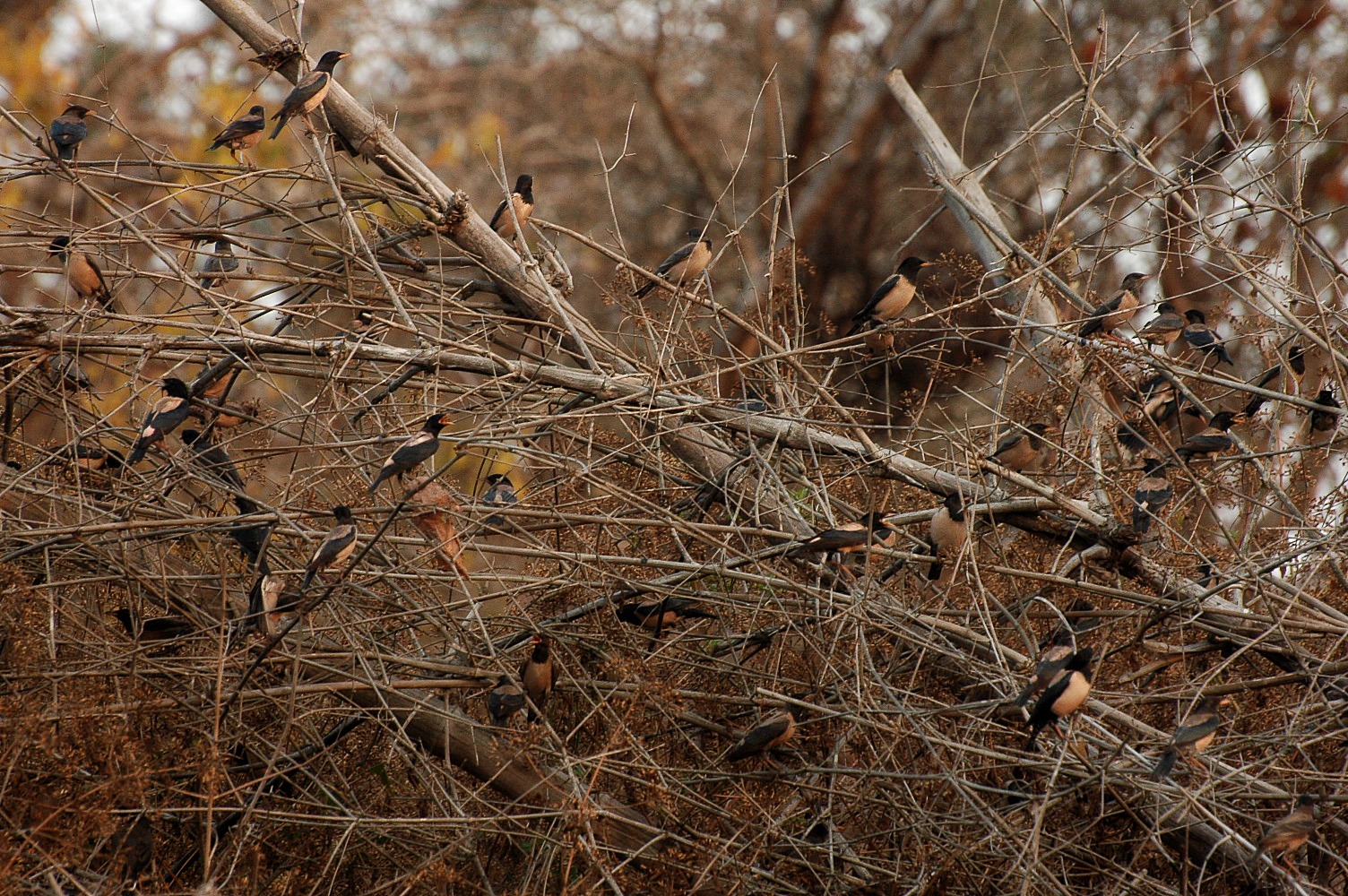 The breeding range of this bird is from easternmost Europe across temperate southern Asia. It is a strong migrant and winter in India and tropical Asia. They fly in flock and forage in flocks thus intimidating the local species. They are noisy but at times sing too.in Bhadra we are see them as passerby for few days in late evening. They form too interesting patterns in sky before roosting at night. One has to be an artist to visualize the patterns
The breeding range of this bird is from easternmost Europe across temperate southern Asia. It is a strong migrant and winter in India and tropical Asia. They fly in flock and forage in flocks thus intimidating the local species. They are noisy but at times sing too.in Bhadra we are see them as passerby for few days in late evening. They form too interesting patterns in sky before roosting at night. One has to be an artist to visualize the patterns
11. Eurasian Sparrow Hawk
The Eurasian sparrow hawk (Accipiter nisus), also known as the northern sparrow hawk or simply the sparrow hawk, is a small bird of prey in the family Accipitridae. The Eurasian sparrow hawk inhabits the edges of wooded areas and forests interspersed with open areas. The migrant sparrow hawks can be seen in any habitat, including urban areas and cities.
Adult male Eurasian sparrow hawks have bluish grey upperparts and orange-barred underparts; females and juveniles are brown above with brown barring below. The female is up to 25% larger than the male – one of the largest differences between the sexes in any bird species.
The Eurasian sparrow hawk is not seen regularly, few times it has been spotted and recorded in the Woods of Bhadra.
Narrated and written by
Kishore. V
Naturalist (Jungle lodges & resorts)






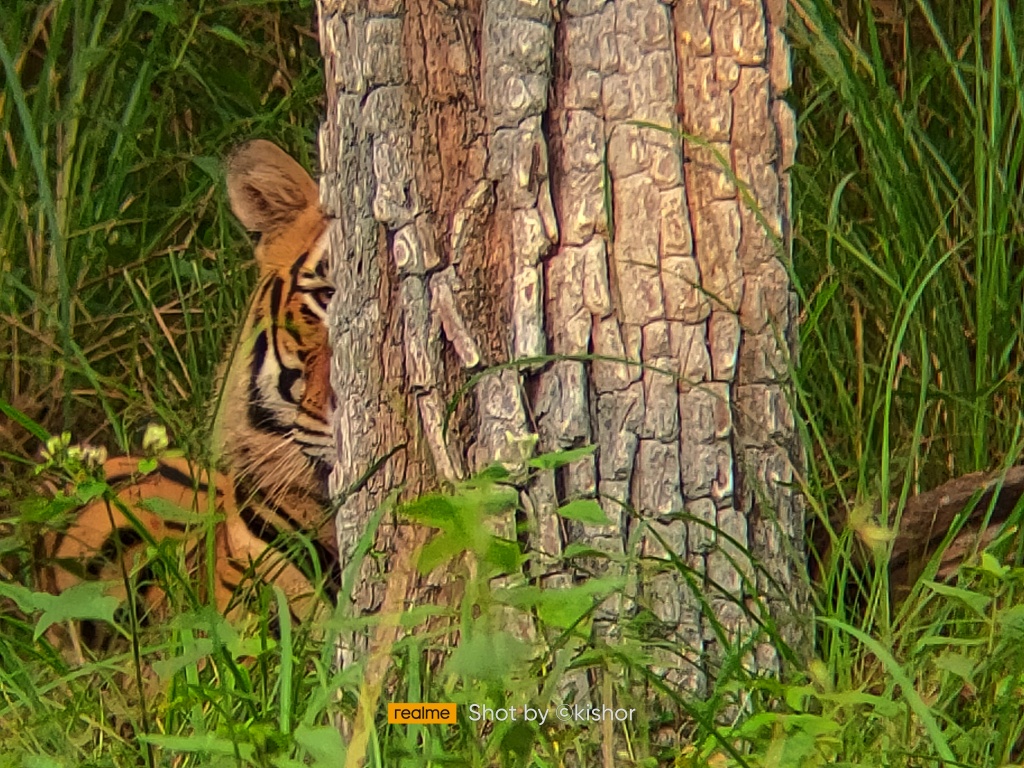







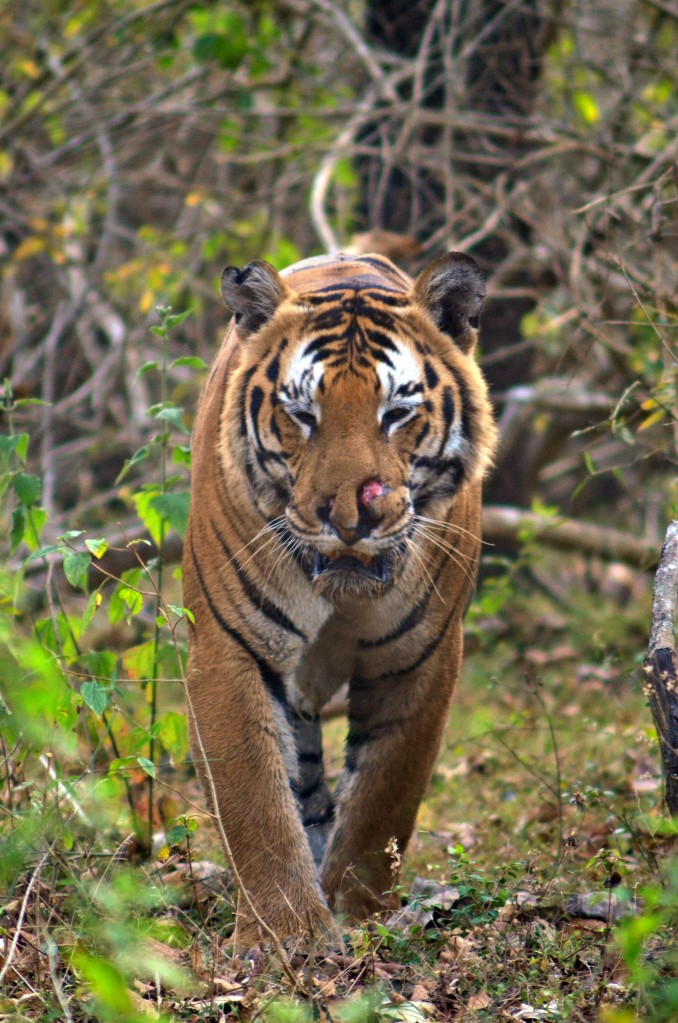
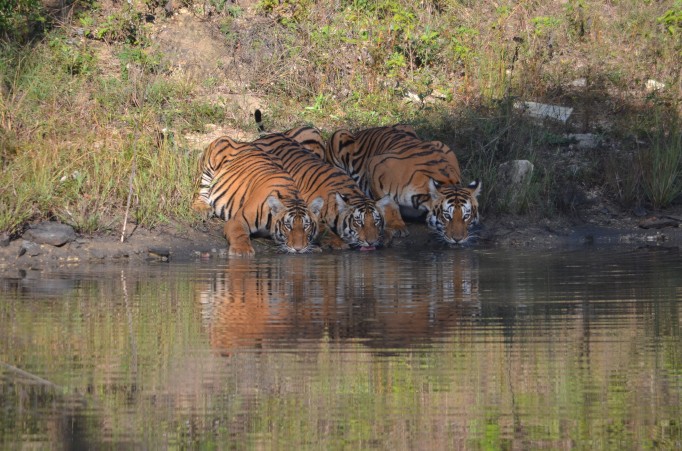








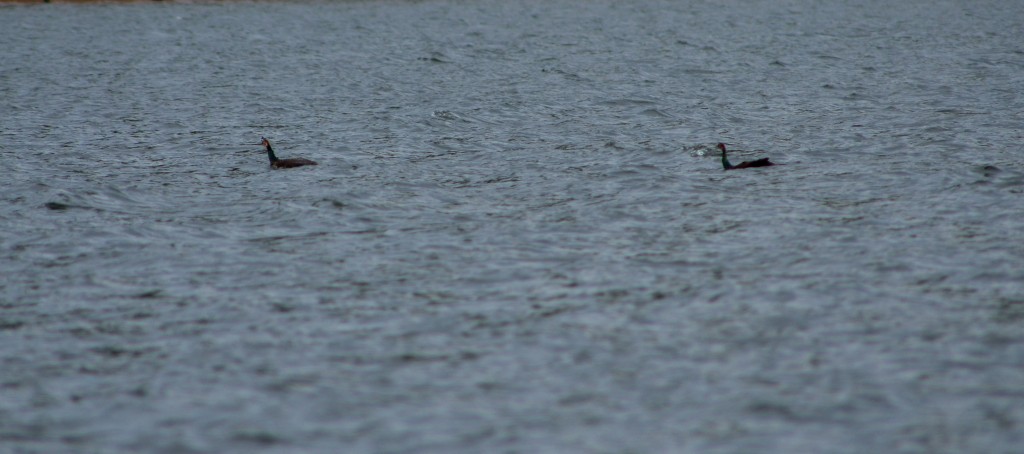





 Owls may be important predators of the squirrel, as calls of certain owls are loud and scary and tends to make other animals make alarm calls and give away the location in the pitch dark.
Owls may be important predators of the squirrel, as calls of certain owls are loud and scary and tends to make other animals make alarm calls and give away the location in the pitch dark.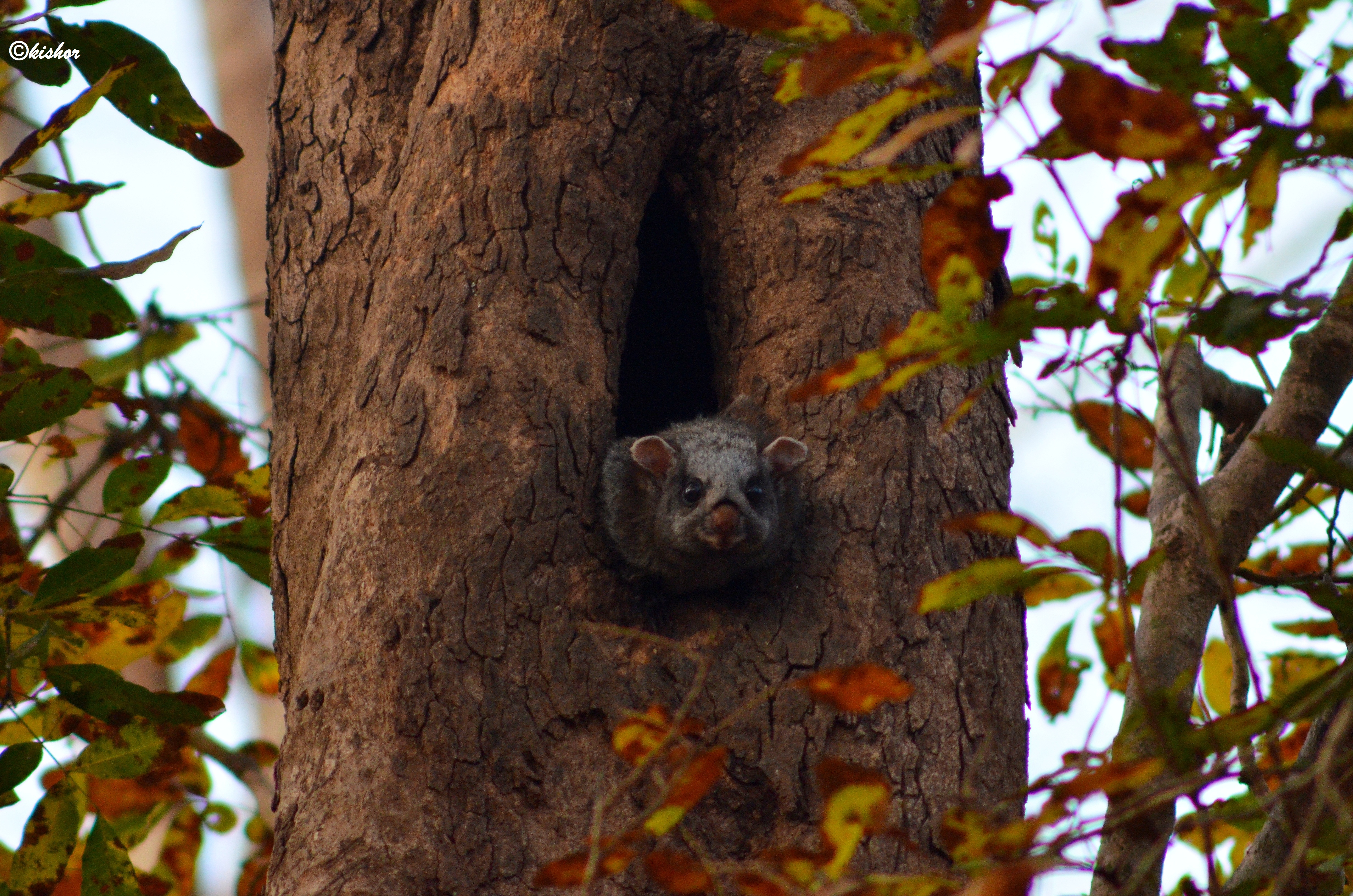 Bhadra has a good density of such species of trees and so the landscape promises a supporting home to these squirrels that are already thriving here.
Bhadra has a good density of such species of trees and so the landscape promises a supporting home to these squirrels that are already thriving here.





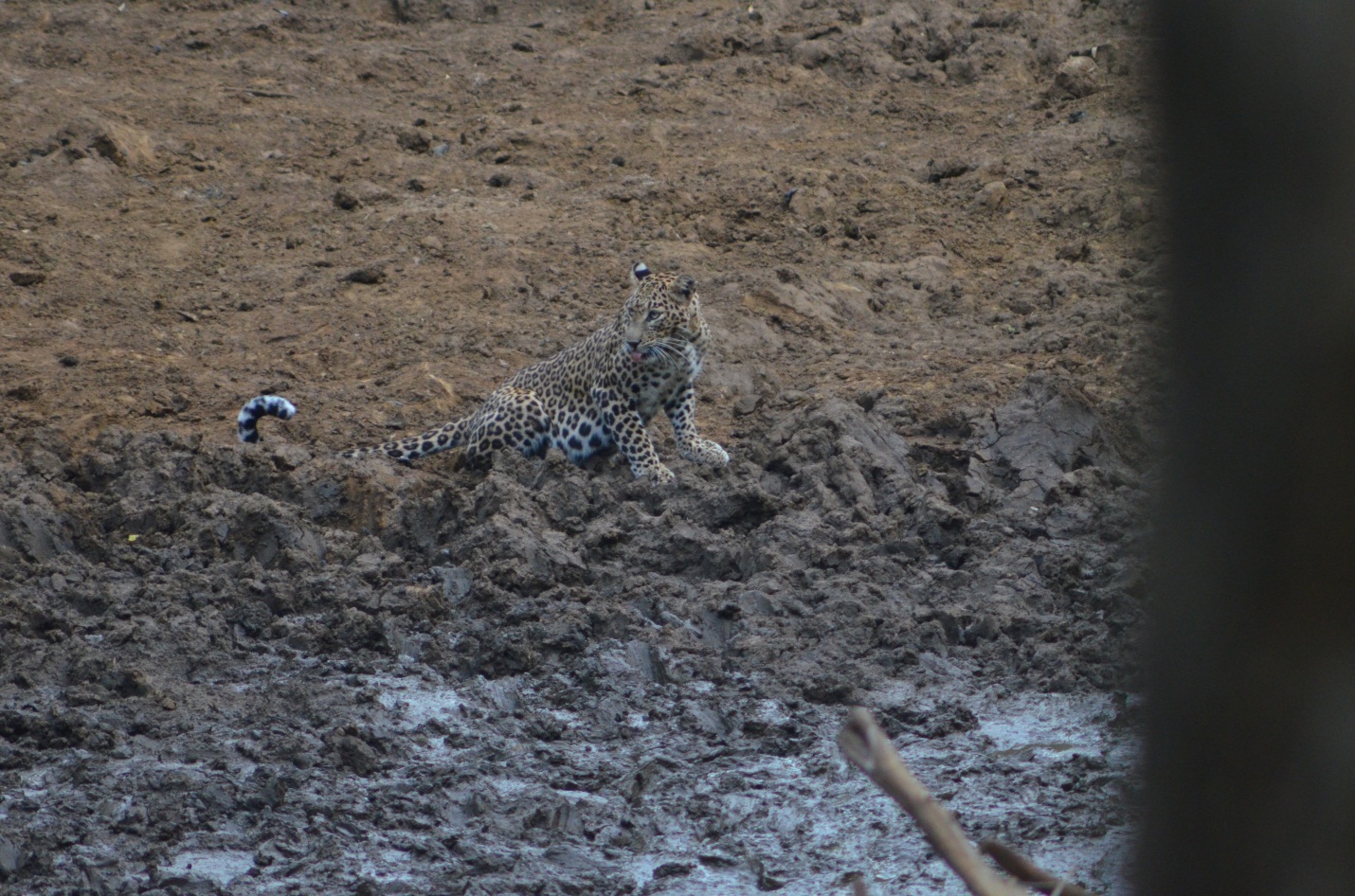





 The black stork is a large bird, it has long red legs, a long neck and a long, straight, pointed red beak. We are seeing them since last 3 years, they can be seen from winter to summer. Generally, they move in pairs, up to flock of 8-10. They are observed around water holes, back waters during early morning and late evenings in shallow muddy water hunting and feeding on crabs, toads and fish. They roost on top of dry trees.
The black stork is a large bird, it has long red legs, a long neck and a long, straight, pointed red beak. We are seeing them since last 3 years, they can be seen from winter to summer. Generally, they move in pairs, up to flock of 8-10. They are observed around water holes, back waters during early morning and late evenings in shallow muddy water hunting and feeding on crabs, toads and fish. They roost on top of dry trees. The bird is pale grey and is easily distinguished from any of the other geese by the black bars on its head. It is also much paler than the other geese in this genus. In winters, early in the morning we see them flying above back waters in V shape. There will be several individual flocks flying. Sometimes we do see them on the banks of the back water feeding on fresh grass and shoots.
The bird is pale grey and is easily distinguished from any of the other geese by the black bars on its head. It is also much paler than the other geese in this genus. In winters, early in the morning we see them flying above back waters in V shape. There will be several individual flocks flying. Sometimes we do see them on the banks of the back water feeding on fresh grass and shoots. It possesses specialized physical characteristics and exhibits unique behaviour to assist in hunting and catching Prey. Osprey supposed to be winter migrant to Bhadra back water. Due to rich availability of its prey, few have become a resident here. They can be seen perched on tree stumps in Backwaters of Bhadra.
It possesses specialized physical characteristics and exhibits unique behaviour to assist in hunting and catching Prey. Osprey supposed to be winter migrant to Bhadra back water. Due to rich availability of its prey, few have become a resident here. They can be seen perched on tree stumps in Backwaters of Bhadra.
 Wide Spread Winter, we get to see them more often in the Back Waters area of Bhadra Reservoir. When water level recedes, more tree stumps are visible, and we can see them perched on the same. Brahminy Kites can be seen chasing them very often. They do mainly hunt and feed on small birds, waders, insects, rodents and fish too.
Wide Spread Winter, we get to see them more often in the Back Waters area of Bhadra Reservoir. When water level recedes, more tree stumps are visible, and we can see them perched on the same. Brahminy Kites can be seen chasing them very often. They do mainly hunt and feed on small birds, waders, insects, rodents and fish too. The Indian spotted eagle is about 24 inches in length and has a wingspan of 60 inches. It is broad-headed, with the widest mouth of all spotted eagles. Adults can be told apart from the greater spotted eagle by its lighter colour, darker eyes, and habitat preference.
The Indian spotted eagle is about 24 inches in length and has a wingspan of 60 inches. It is broad-headed, with the widest mouth of all spotted eagles. Adults can be told apart from the greater spotted eagle by its lighter colour, darker eyes, and habitat preference. This kingfisher is about 11 inches long. The adult has a purple-blue wings and back, black head and shoulders, white neck collar and throat, and rufous underparts. The large bill and legs are bright red. Sexes are similar, but juveniles are a duller version of the adult and show streaks on the throat. The call of this kingfisher is a cackling ki-ki-ki
This kingfisher is about 11 inches long. The adult has a purple-blue wings and back, black head and shoulders, white neck collar and throat, and rufous underparts. The large bill and legs are bright red. Sexes are similar, but juveniles are a duller version of the adult and show streaks on the throat. The call of this kingfisher is a cackling ki-ki-ki The Indian pitta is a small stubby-tailed bird, it has long, strong legs, a very short tail and stout bill, with a buff coloured crown stripe, black coronal stripes, a thick black eye stripe and white throat and neck. The upperparts are green, with a blue tail, the underparts buff, with bright red on the lower belly and vent. The bird hops on the ground to forage and has been known to get trapped in ground traps meant for small mammals.
The Indian pitta is a small stubby-tailed bird, it has long, strong legs, a very short tail and stout bill, with a buff coloured crown stripe, black coronal stripes, a thick black eye stripe and white throat and neck. The upperparts are green, with a blue tail, the underparts buff, with bright red on the lower belly and vent. The bird hops on the ground to forage and has been known to get trapped in ground traps meant for small mammals. The oriental dollarbird has a length of up to 30 cm. It is dark brown, but this is heavily washed with a bluish-green sheen on the back and wing coverts. Its belly and under tail coverts are light coloured, and it has glossy bright blue colouring on its throat and under tail. Its flight feathers are a darker blue. Its bill is short and wide and in mature animals is coloured orange-red with a black tip. It has very light blue patches on the outer parts of its wings which are highly visible in flight and for which it is named. The females are slightly duller than the males but overall the two are very similar.
The oriental dollarbird has a length of up to 30 cm. It is dark brown, but this is heavily washed with a bluish-green sheen on the back and wing coverts. Its belly and under tail coverts are light coloured, and it has glossy bright blue colouring on its throat and under tail. Its flight feathers are a darker blue. Its bill is short and wide and in mature animals is coloured orange-red with a black tip. It has very light blue patches on the outer parts of its wings which are highly visible in flight and for which it is named. The females are slightly duller than the males but overall the two are very similar. The breeding range of this bird is from easternmost Europe across temperate southern Asia. It is a strong migrant and winter in India and tropical Asia. They fly in flock and forage in flocks thus intimidating the local species. They are noisy but at times sing too.in Bhadra we are see them as passerby for few days in late evening. They form too interesting patterns in sky before roosting at night. One has to be an artist to visualize the patterns
The breeding range of this bird is from easternmost Europe across temperate southern Asia. It is a strong migrant and winter in India and tropical Asia. They fly in flock and forage in flocks thus intimidating the local species. They are noisy but at times sing too.in Bhadra we are see them as passerby for few days in late evening. They form too interesting patterns in sky before roosting at night. One has to be an artist to visualize the patterns